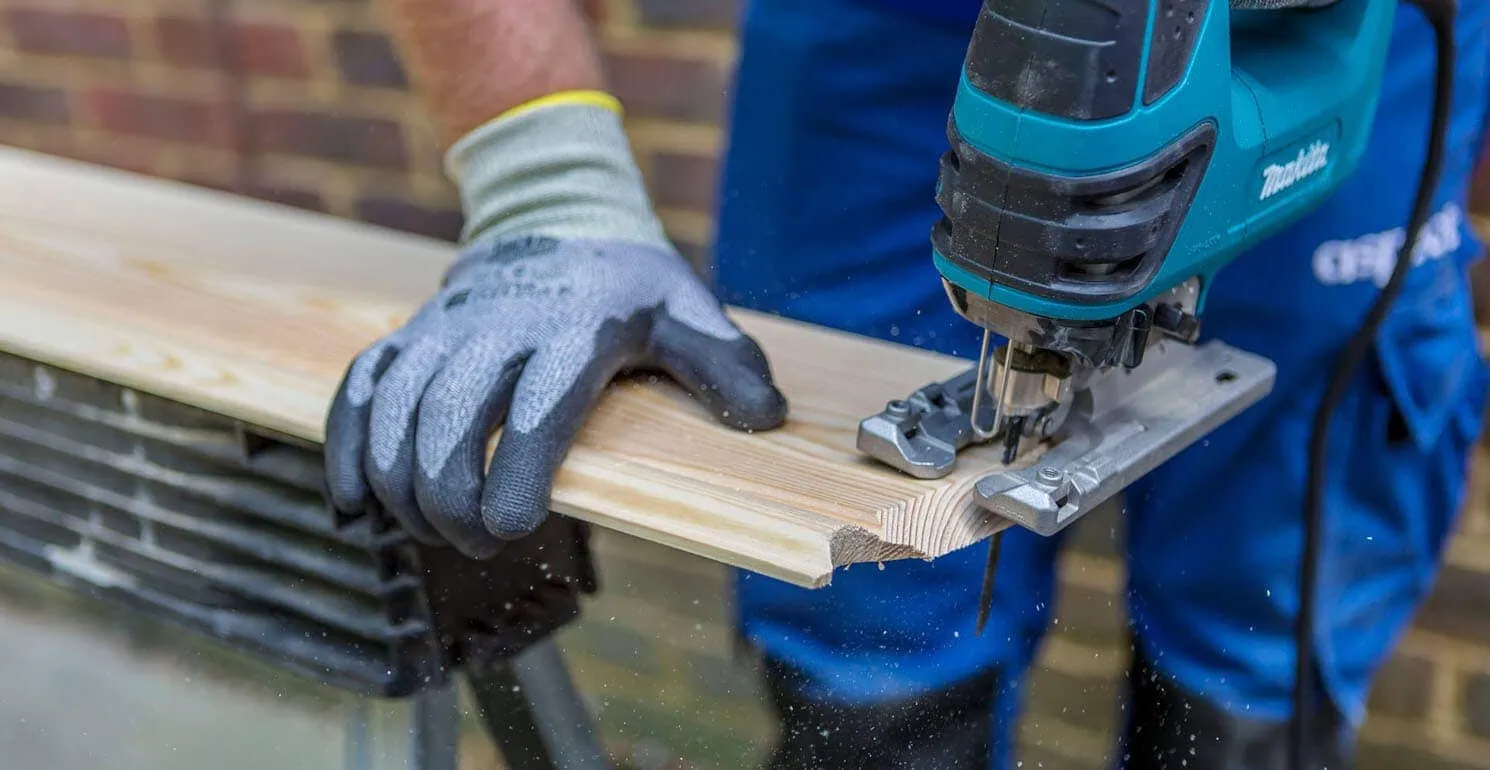The difference between a carpenter and a joiner
Planning to improve your home with bespoke furniture? You may be wondering if you need a carpenter or a joiner. To answer this question, we explore the differences between the two construction trades, and explain why carpentry and joinery are often needed for the same job. We’ll also run through the creative process, so you know exactly what to expect when you contact us to have bespoke fitted furniture built.

What does a carpenter do?
To put it simply, our carpenters undertake all on-site work. Once they arrive at your property, they’ll discuss your needs and preferences. They also measure up to ensure your bespoke product will be an exact fit for the space available.
Our carpentry services include the installation of floors, skirting boards, architraves, partition walls, kitchen cabinets, doors, windows, and bespoke furniture like window seats. Our carpenters also provide the first-fix carpentry on construction sites; fitting floor joists, door frames, window frames and more.
Most people think carpenters deal solely with wood, but some can also work with plastic, metal and other materials. They’re able to install, adjust and repair bespoke fitted storage solutions, but they won’t produce them from scratch.
What does a joiner do?
Joinery involves cutting individual pieces of wood and fitting them together; crafting the bespoke items that carpenters install. Their work is done off-site in a joinery workshop. If you’re after fitted furniture or timber products for the home, it takes a joiner to build them – typically at a workbench using heavy-duty machinery like band saws and thickness planers.
To make sure your bespoke fitted furniture meets your requirements, our carpenters collect as much information from you as possible. The more detailed and specific this information is, the closer the bespoke joinery work will be to your vision.
Do carpenters and joiners share the same skills?
Carpenters and joiners apply the same basic techniques and hand tools to get the job done, e.g. power tools like drills and routers, as well as block planes, hammers, chisels and hand saws.
In addition, someone starting out in the industry can get the combined Carpentry & Joinery diploma from City & Guilds. As a result, many professional carpenters and joiners start their careers with the same skills before deciding how they want to specialise in the construction industry.
Their skills diverge the most when it comes to off-site production vs on-site work. Our carpenters are experienced in fitting bespoke items in awkward spaces, so they can offer a practical solution to almost any on-site challenge. However, joiners are typically better equipped to build design-accurate pieces from concept to completion.

Should you choose a carpenter or a joiner?
When you ask us to build bespoke fitted furniture, you don’t need to worry about whether to speak with a carpenter or joiner. Instead, the whole process is streamlined for you. That’s because we manage bespoke furniture projects from start to finish, removing the need to call on multiple companies.
We want you to be confident using us, so we’ll be happy to answer any questions you might have at the outset. You can ask about the storage options available, our project history, or the full list of carpentry and joinery services we offer.
How can I get a window seat or fitted storage unit installed?
Our creative process is outlined below:
- A carpenter will visit your property to discuss the details, run through the visual options and measure up. They’ll pinpoint and resolve any space-related challenges (e.g. by recommending a certain type of hinge if a door must lie flat against a wall), and supply an estimate outlining the costs.
- Once the price is agreed, the carpenter shares the details of the brief with the joiners. Each section of your new unit is then custom-made and finished or sprayed at the workshop, before being wrapped and prepared for pick-up.
- The carpenter then arranges an installation date and collects your unit from the joinery workshop – placing it carefully in their van. Once at your property, they’ll carry out any final trimming work needed to ensure your furniture is an exact fit for the intended space. They’ll then install fixings, such as drawer runners and door handles, to complete the job.
We can build a storage solution that frees up space and declutters you home. Our experienced carpenters work with joinery experts on all manner of projects, including bespoke window seats complete with useful storage space.

Get a free estimate for a window seat
Please fill out our form. We usually respond within one working day.
We’ll need:
- Measurements: The length, width and height required
- Storage options: Whether you’d like doors, drawers or hinged tops included
- Your choice of finish: Natural wood, laminate, or painted (sprayed before delivery)
- A photo: Showing the space where your window seat will be fitted
Was this article helpful?
Think we could improve this article? Please let us know